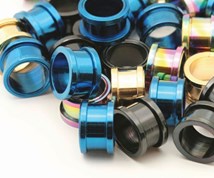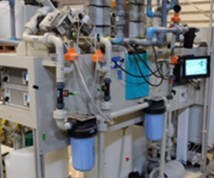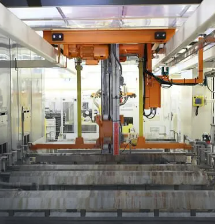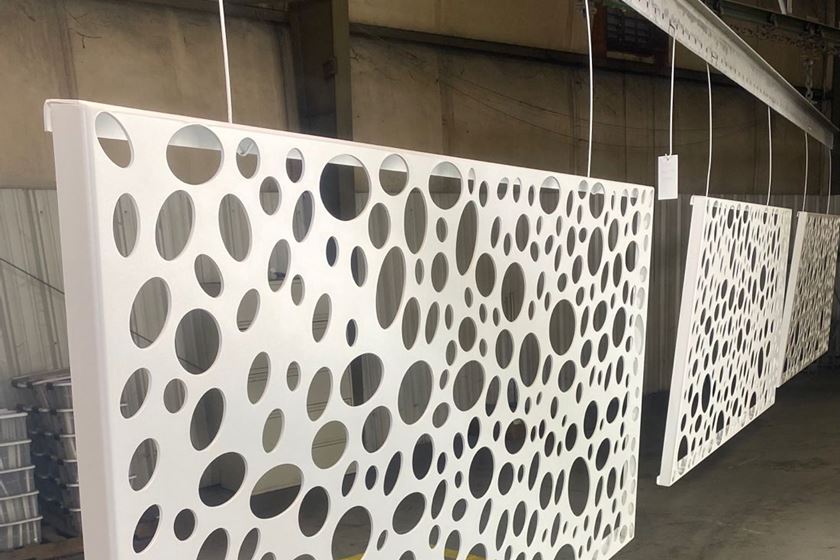Plating Q&A: Electroless Nickel Deposit Stains
What is the cause of electroless nickel deposit stains and how can we eliminate it?
Q. From time to time our electroless nickel plated parts become stained. What is the cause of this, and how can we eliminate it?
A. Staining of EN deposits has been around for many years and for many reasons. However, with a good understanding of EN chemistry, good maintenance and excellent control, most stains can be avoided. Here are some of the factors that can contribute to staining and suggestions on how to avoid them:
Featured Content
Poor rinsing. EN deposits are very active when first plated, so they will have an affinity to oxidize and/or stain quickly. If the surface is kept wet with the salts of the EN solution remaining on the surface, the deposit may be attacked and become discolored. Rinsing parts over the EN tank immediately or rinsing the parts quickly in a clean (low dissolved solids) rinse water after plating is imperative to retard staining.
Alkaline rinsing. An alkaline in pH (>7.0) first rinse tank can be advantageous. Generally, EN coatings do not stain in alkaline environments. Platers can simply add ammonium hydroxide or caustic soda to a stagnant rinse after the EN tank to assure neutralization of the acidic EN solution that could be present. Some platers actually return this stagnant solution back into the EN chemistry, especially if ammonia is used. This can “close loop” some of the EN byproducts from waste treatment.
Cooling parts. It is critical to cool parts after plating. Hot parts can absorb moisture from the plating shop, which can cause “spotting.” This is especially true during the warm, humid months of the summer. Generally, the larger the part (a heat sink) the greater the tendency to stain.
Phosphorus content. The percentage of phosphorus in the EN deposit plays a significant role in staining. Generally, higher phosphorus deposits are more resistant to staining. High phosphorus EN chemistries (10–12 percent phosphorous) are typically compressively stressed, amorphous in nature and more resistant to oxidation. Duplex coatings using high phosphorus EN as the topcoat has retarded staining in some high tech applications. Recently introduced RoHS compliant EN chemistries have lower phosphorus contents than previous mid-phosphorous EN chemistries. These lower phos EN chemistries have a tendency to stain more as a result.
Brighteners/stabilizers. The microstructure and atomic structure of the EN deposit can be adversely affected by the choice of stabilizer/brightener in the deposit. Co-deposition of certain brighteners/stabilizers can lead to adverse effects, such as the staining of the deposit. Certain sulfur stabilizers can co-deposit and create black nickel sulfide stains. Additionally, co-deposition of high concentrations of lead in high phos EN chemistries can affect the nitric acid resistance of the deposit.
Post-dips. In certain cases, a modified final rinse may be advantageous. This is especially true for castings. Proprietary additives have been developed that have shown promise in the reduction of stains. These solutions contain chemicals such as surface tension reducers, alkalai and/or chelating agents.
Chrome rinse. The addition of a final chrome rinse can be advantageous to reducing the potential of staining. The dilute chrome rinse passivates the nickel surface, retarding stains. Unfortunately, this kind of rinse is out of favor at the moment due to the potential presence of hexavalent chrome for RoHS applications.
Excellent EN control. Maintaining pH, temperature, nickel and hypo concentrations is paramount to providing consistent, stain-free deposits. Low temperatures, low pHs or low nickel activity can lead to dark or streaky deposits.
Understanding the EN chemistry, as well as good plating practices, can help to eliminate rejects due to staining.
Mike Aleksinas is the president of MetalChem. He can be reached at mike@metalchem-inc.com, or at 864-877-6175.
Originally published in the February 2016 issue.
RELATED CONTENT
-
Aluminum Anodizing
Types of anodizing, processes, equipment selection and tank construction.
-
Choosing and Troubleshooting Copper Electroplating Processes
Learn more on this inexpensive and highly efficient process.
-
Smut and Desmutting
Question: I am new to this industry and have heard about smut and desmutting operations.


















